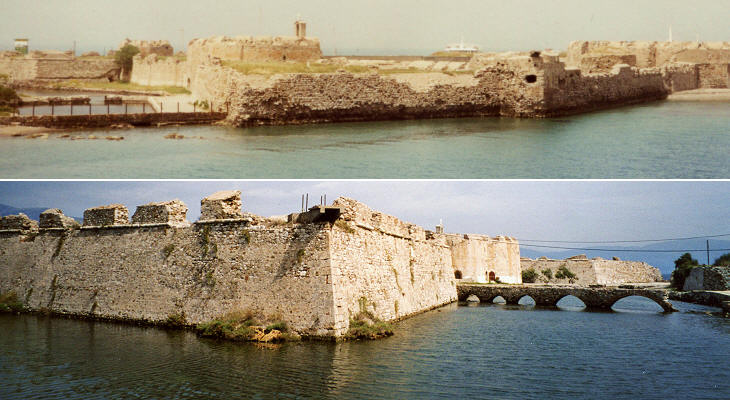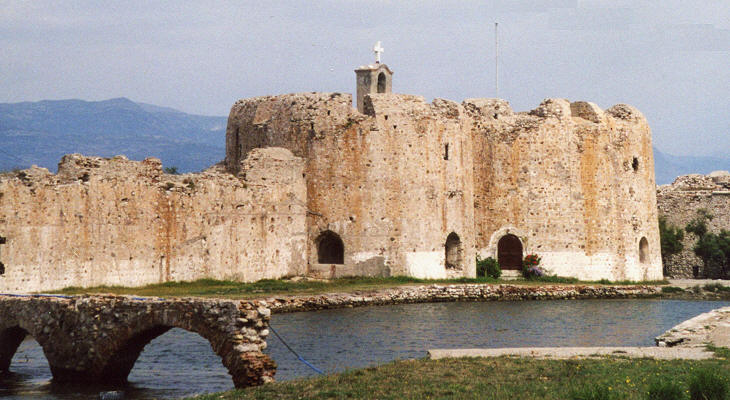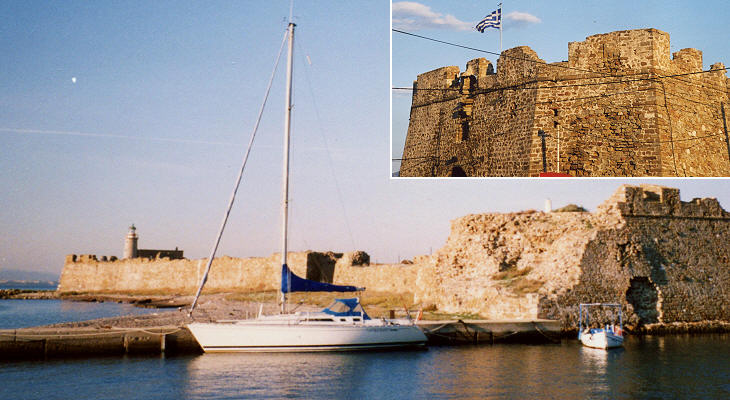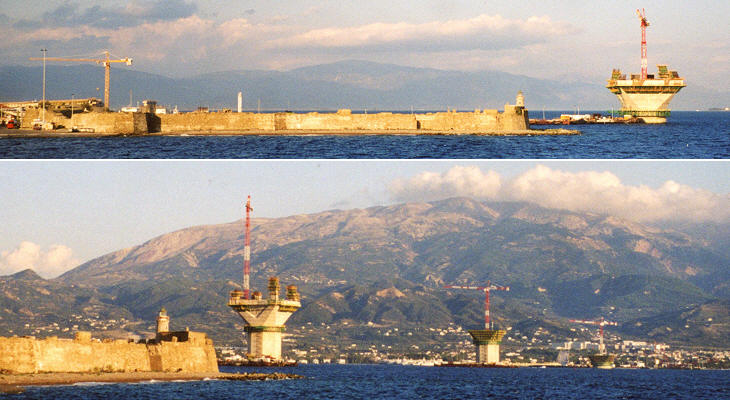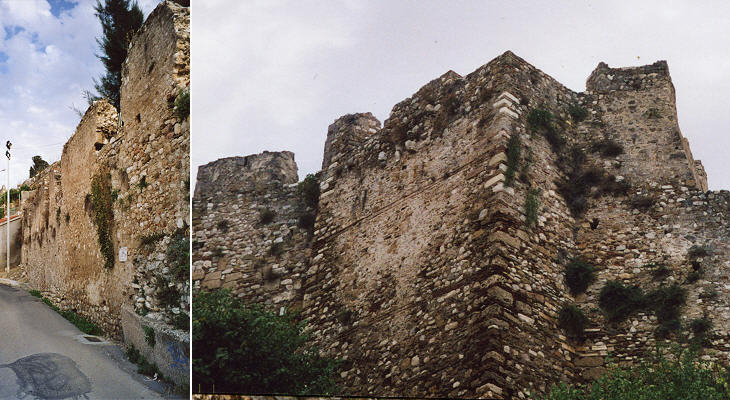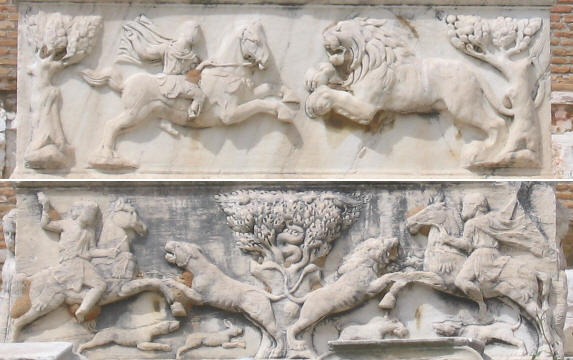  What's New! Detailed Sitemap All images © by Roberto Piperno, owner of the domain. Write to romapip@quipo.it. Text edited by Rosamie Moore. Page revised in November 2009. |
 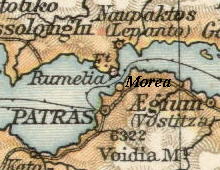 Castelli di Morea e Rumelia and Patrasso Castelli di Morea e Rumelia and PatrassoCastello di Morea and Castello di Rumelia Key dates: 1500 Sultan Bayazet II builds the fortresses 1687 Both fortresses are conquered by the Venetians 1699 Castello di Rumelia is returned to the Turks by the peace of Carlowitz (1699) 1714 Castello di Morea is conquered by the Turks The narrows between the Gulf of Patras and the Gulf of Corinth are also called the Little Dardanelles. Here in 1500 Sultan Bayazet II built a fortress on both sides, which was reinforced by the Venetians in the XVIIIth century. The fortress on the Peloponnesian coast was called Castello di Morea (as the Peloponnese was named during the Venetian conquest), while the fortress on the opposite side of the narrows was called Castello di Rumelia (a synonym for Europe, deriving from the association made by the Arabs between Rome and Europe). Today they are called Castle of Rion (Morea) and Castle of Antirion (Rumelia).
The narrows were forced in 1571 by the Christian fleet commanded by Don John of Austria. The battle which ensued is known as the Battle of Lepanto, the Italian name for Nafpaktos, a port 5 miles to the east of Castello di Rumelia.
Castel di Morea shows the enhancements made by the Venetians during their short occupation at the end of the XVIIth century. The fortress was completely separated from the mainland and large circular towers were built for placement of artillery on their tops. The Venetians hoped that the Ottoman Empire would not have recovered from the effects of the disastrous war which had led to the loss of Hungary and Transilvania to Austria and of Morea to Venice (Peace of Carlowitz, 1699). In 1714 however, the Turks, relying on the fact that the growing interests of Austria in Italy (acquisition of the Duchy of Milan, 1713) had weakened their alliance with Venice, invaded Morea and the Venetian fortresses, largely unmanned, fell one after the other before the Austrian intervention in 1716.
Castello di Rumelia is less impressive than its twin on the other side of the narrows because the Venetians dismantled it when they had to return it to the Turks.
A bridge is being built (2002) across the narrows; the traffic from Epirus (Ioanina) to Athens, in order to avoid the Pindos Mountains, is channelled southwards through Antirion and Rion: at this location it enters the speedway linking Patras to Athens. With the new bridge cars and trucks will no longer have to board the ferries crossing the narrows.
Patrasso (Patra) Key dates: 1204 Fall of Constantinople: Patrasso is part of the Duchy of Achaia under Frankish rule 1408-13 and 1417-19 Venetian occupations 1430 The Byzantines (re)conquer Patrasso 1460 The Turks conquer Patrasso 1687 Patrasso is conquered by the Venetians 1714 Patrasso is conquered by the Turks The conquest of Greece by the Romans in the IInd century BC made Patrasso the gateway between Greece and the West. As usual the town was located on a hill (acropolis) near the sea and it was protected by walls.
The current fortress of Patrasso is the composite result of the additions and modifications made by the Byzantines, the Franks, the Turks and the Venetians during 15 centuries.
The walls and the keep of the fortress show medieval features. The walls were built with materials from the Roman buildings; they show many sections of columns, a sign of the number of temples which once existed in the acropolis of Patrasso (see the image used as background for this page).
Both the Turks and the Venetians strengthened the fortress by adding round towers.
Recent excavations have brought to light at the foot of the acropolis several buildings of the Roman town including a well preserved odeon and some finely decorated sarcophagi. Excerpts from Memorie Istoriografiche del Regno della Morea Riacquistato dall'armi della Sereniss. Repubblica di Venezia printed in Venice in 1692 and related to this page:
Introductory page on the Venetian Fortresses Pages of this section: On the Ionian Islands: Corfù (Kerkyra) Paxo (Paxi) Santa Maura (Lefkadas) Cefalonia (Kephallonia) Asso (Assos) Itaca (Ithaki) Zante (Zachintos) Cerigo (Kythera) On the mainland: Butrinto (Butrint) Parga Preveza and Azio (Aktion) Vonizza (Vonitsa) Lepanto (Nafpaktos) Atene (Athens) On Morea: Castel di Morea (Rio), Castel di Rumelia (Antirio) and Patrasso (Patra) Castel Tornese (Hlemoutsi) and Glarenza Navarino (Pilo) and Calamata Modon (Methoni) Corone (Koroni) Braccio di Maina, Zarnata, Passavà and Chielefà Mistrà Corinto (Korinthos) Argo (Argos) Napoli di Romania (Nafplio) Malvasia (Monemvassia) On the Aegean Sea: Negroponte (Chalki) Castelrosso (Karistos) Oreo Lemno (Limnos) Schiatto (Skiathos) Scopello (Skopelos) Alonisso Schiro (Skyros) Andro (Andros) Tino (Tinos) Micono (Mykonos) Siro (Syros) Egina (Aegina) Spezzia (Spetse) Paris (Paros) Antiparis (Andiparos) Nasso (Naxos) Serifo (Serifos) Sifno (Syphnos) Milo (Milos) Argentiera (Kimolos) Santorino (Thira) Folegandro (Folegandros) Stampalia (Astipalea) Candia (Kriti) You may refresh your knowledge of the history of Venice in the Levant by reading an abstract from the History of Venice by Thomas Salmon, published in 1754. The Italian text is accompanied by an English summary. Clickable Map of the Ionian and Aegean Seas with links to the Venetian fortresses and to other locations (opens in a separate window) |
